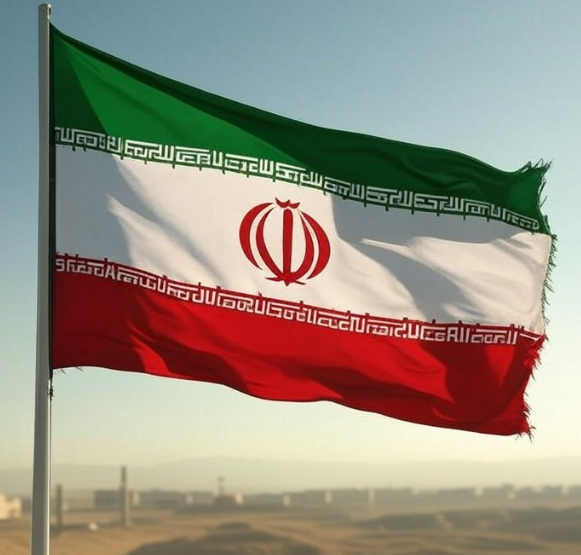
The story of Iran's nuclear program stretches back over seven decades and has become a major source of tension in global geopolitics, particularly between Iran, the United States, and Israel. The roots of this complex history can be traced to December 8, 1953, during a United Nations General Assembly session chaired by Vijaya Lakshmi Pandit, the sister of India's first Prime Minister Jawaharlal Nehru. On that day, U.S. President Dwight D. Eisenhower delivered his famous "Atoms for Peace" speech, introducing the concept of using nuclear energy for peaceful civilian purposes. Inspired by this initiative, Iran's nuclear program officially began in 1957.
In the 1950s, Iran was a monarchy led by Mohammad Reza Pahlavi. Prime Minister Mohammad Mossadegh's attempt to nationalize Iran's oil industry led to his overthrow through a coup orchestrated by Britain and the United States, known as Operation Ajax. Post-coup, Shah Mohammad Reza Pahlavi consolidated power and initiated close ties with the West, particularly the U.S.
In 1957, two major developments occurred: the creation of SAVAK, Iran's intelligence agency built with the help of the CIA and Israel's Mossad, and the signing of a nuclear cooperation agreement with the U.S. This led to the establishment of a 5-megawatt nuclear research reactor in Tehran. By 1967, the Tehran Research Reactor achieved criticality, with the U.S. supplying enriched uranium fuel. In 1970, Iran officially signed the Nuclear Non-Proliferation Treaty (NPT), committing to peaceful nuclear development.
The Shah had ambitious plans to establish 23 nuclear power plants and formed the Atomic Energy Organization of Iran in 1974 under the leadership of Akbar Etemad. Etemad later revealed that the Shah wanted Iran to be strong enough to develop nuclear weapons if necessary.
However, the 1979 Islamic Revolution dramatically changed Iran's political landscape. Ayatollah Khomeini's rise to power led to strained relations with the U.S. and Israel. Iranian students stormed the U.S. embassy in Tehran, holding American diplomats hostage for over a year, and diplomatic ties were severed. Khomeini labeled the U.S. as the "Great Satan" and Israel as the "Little Satan." The Israeli embassy was handed over to the Palestine Liberation Organization, and Iran supported the creation of Hezbollah in Lebanon.
Following the revolution, Iran's nuclear program slowed but resumed secretly in the 1990s with assistance from Russia, China, and Pakistan. The clandestine program, known as the "Amad Project," was led by Mohsen Fakhrizadeh, considered the architect of Iran's nuclear weapons program. Pakistani scientist Abdul Qadeer Khan admitted in 2004 that he had provided Iran with uranium enrichment technology in the early 1990s.
In 2002, Iranian opposition groups, with help from Western intelligence agencies like Mossad and the CIA, exposed Iran's secret nuclear sites at Natanz and Arak. The International Atomic Energy Agency (IAEA) discovered these facilities, leading to renewed sanctions by the U.S. and international community.
Despite international pressure, Iran announced in 2010 that it had begun producing highly enriched uranium, a major step toward nuclear self-sufficiency. The same year, the U.S. and Israel launched a cyberattack using the Stuxnet virus to sabotage Iran's nuclear facilities.
The covert war escalated with targeted assassinations of Iranian nuclear scientists. On November 29, 2010, two coordinated attacks in Tehran resulted in the death of Majid Shahriari, a quantum physicist, while Fereydoon Abbasi, a Revolutionary Guards member linked to the nuclear program, survived a car bomb attack.
Diplomatic efforts culminated in 2015 with the signing of the Joint Comprehensive Plan of Action (JCPOA) between Iran and the P5+1 countries (China, France, Germany, Russia, the U.K., the U.S., and the EU). The agreement significantly limited Iran's nuclear activities in exchange for sanctions relief. A December 2015 IAEA report concluded that Iran had a structured nuclear weapons program until 2003, with some activities continuing until 2009.
However, tensions reignited in 2018 when the U.S., under President Donald Trump, withdrew from the JCPOA, accusing Iran of continuing its nuclear weapons ambitions. In a presentation, Israeli Prime Minister Benjamin Netanyahu prominently mentioned Mohsen Fakhrizadeh's role in the program. Two years later, Fakhrizadeh was assassinated in a sophisticated attack involving a remote-controlled machine gun allegedly operated via satellite.
Most recently, on June 13, 2025, before sunrise, Israel launched strikes targeting Iranian nuclear and military sites, reportedly killing several nuclear scientists, including Fereydoon Abbasi, who had survived the 2010 attack. These developments have once again brought Iran's nuclear ambitions into global focus, intensifying the conflict between Iran, Israel, and the U.S.
While Iran insists that its nuclear program is for peaceful purposes, the level of uranium enrichment it has achieved raises concerns in the international community about its potential military dimensions. With multiple stakeholders holding divergent views, the Iranian nuclear issue remains a volatile flashpoint in Middle Eastern geopolitics.
The complex and evolving history of Iran's nuclear program continues to shape the dynamics of international relations, as witnessed in the ongoing hostilities between Iran and Israel, as well as persistent U.S. skepticism and intervention.
Disclaimer:
This article is for informational purposes only. The content is based on publicly available reports, historical data, and news sources. The views expressed do not represent any political stance or opinion and are intended solely for educational and analytical purposes.




